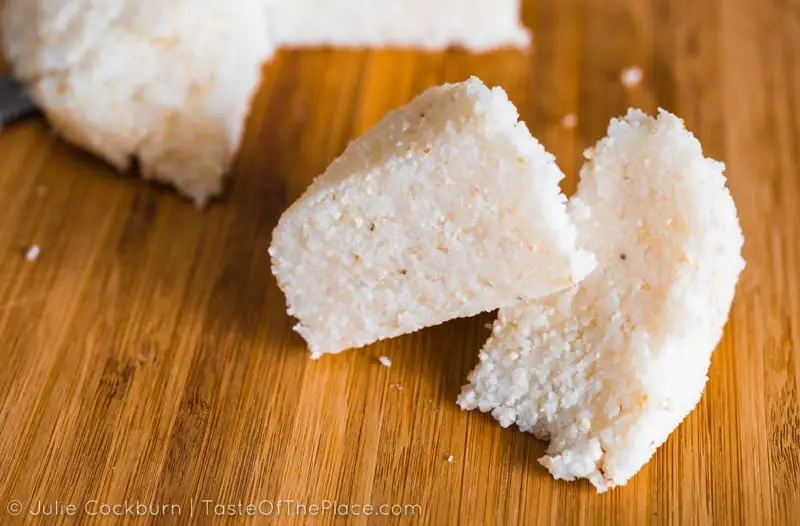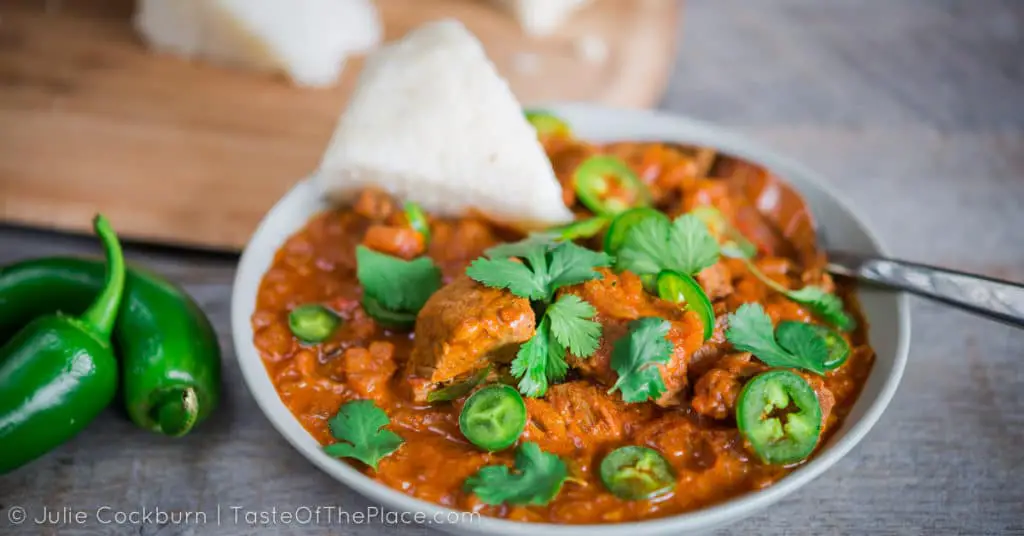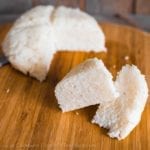This post may contain affiliate links. That means if you click on a link and make a purchase, I may make a small commission at no additional cost to you. Thank you for your support!

I’m amazed at how many versions of cornmeal porridge exist in the world! Once upon a time, I thought Italian polenta was it – but, noooo – there are delicious and unique versions throughout Europe, the Americas, and even Africa. Who knew that humble corn would make such a mark across the globe!
This version, called ugali, comes from my friend, fellow Food Revolution ambassador, and cookbook contributor, Sandra Mukidza, of Nairobi, Kenya. And it happens to pair perfectly with her rich and hearty Kenyan Beef Curry. Yumm!

A bit of ugali history
Before the 19th century, sorghum and millet were the primary grains produced and consumed in Kenya. Corn, or maize, the main ingredient in ugali, was introduced to the area by Portuguese traders. It was initially produced for export but was eventually adopted by locals, who transformed it into the simple and nourishing porridge called ugali.
Today, ugali is a staple of the Kenyan diet, eaten by many on a daily basis. It is generally served as a side – the perfect accompaniment for stews, curries, or veggie dishes.
If you visit Kenya, don’t be surprised to see locals eating ugali with their hands, using it almost like a utensil. The proper way is to pinch a small bit off with your fingers, roll into a ball, and use your thumb to make a small depression for scooping up a bite of stew.
Notes on the recipe
Ugali doesn’t generally call for salt. This recipe follows that tradition. If your tastebuds require a bit of saltiness, simply add a big pinch of salt to the water at the beginning of cooking, or top with salted butter at the table.
You will want to use a sturdy wooden spoon for cooking the ugali. Expect to get a workout in the process, as the dough becomes quite stiff.
You’ll know the ugali is cooked when it starts to pull away from the sides of the pan, and begins to take on the aroma of roasted corn.
FAQs
What kind of cornmeal should I use in ugali?
White cornmeal is traditional, but yellow or a blend of the two will work beautifully.
Do I have to use white cornmeal in ugali?
Nope! While white cornmeal is traditional, yellow cornmeal will work just fine.
Should I use finely or coarsely ground cornmeal in ugali?
Any grind will work fine. The more finely the cornmeal is ground, the faster the ugali will cook. I personally like more coarsely ground cornmeal, and even use grits or polenta-style ground corn, because it adds more texture to the finished ugali.
Can I use grits or polenta-style cornmeal in ugali?
You bet! For the most part, the only noticeable difference between ground corn labeled as cornmeal, grits, or polenta is how coarsely it is ground. Additionally, grits are sometimes ground from hominy, which, in my opinion, makes no discernable difference in the finished ugali.

Ugali – Kenyan cornmeal
- Yield: 4 as a side 1x
Description
Simple and satisfying, this cornmeal porridge from Kenya, called Ugali, is the perfect accompaniment to soups, stews, and savory curries, especially our recipe for Kenyan Beef Curry.
Ingredients
- 2 cups water
- 1 1/2 cups white cornmeal (white is traditional, but yellow works fine)
Instructions
- Bring the water to a boil in a medium saucepan.
- Reduce the heat to low, and stirring constantly with a whisk, slowly add the cornmeal to the boiling water. The ugali will begin to thicken quite quickly.
- Continue cooking on low heat, stirring every minute or so with a sturdy wooden spoon, until the ugali begins to pull away from the sides of the pan and hold together, and takes on the aroma of roasted corn. Turn it out immediately onto a serving plate. If you would like, using a spoon or spatula, quickly shape it into a thick disk or round.
- The ugali will continue to firm as it cools, and will be thick enough to cut with a knife (similar to firm polenta).
Recommended Equipment and Goodies
 Buy Now →
Buy Now → Notes
Ugali is a cornmeal porridge similiar to polenta.
The recipe does not call for any salt, but if you find your tastebuds need a bit more saltiness, you could serve it with some salted butter or add a big pinch of salt to the water at the beginning.
You will want to use a sturdy wooden spoon for cooking the ugali. Expect to get a workout in the process, as the dough becomes quite stiff.
You’ll know the ugali is cooked when it starts to pull away from the sides of the pan and begins to take on the aroma of roasted corn.
Wondering what to serve with Ugali? Give our recipes for Sukuma Wiki (a flavorful combo of cooked greens, onions, and cream) and Kenyan Beef Curry (a savory stew) a try!
If you are looking for more African recipes, South African Bobotie is a favorite around here!
- Category: Side
- Cuisine: Kenyan










Leave a Reply